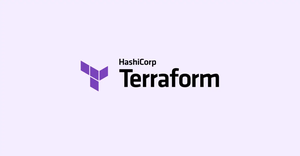In the world of version control with Git, understanding which files to track and which to ignore is crucial for efficient team collaboration and project management. Among the various files you’ll encounter, one peculiar type that often pops up for MacOS users is the .DS_Store file. This tutorial dives deep into what .DS_Store files are, why they’re created, and how to manage them in your Git repositories.
What is .DS_Store?
.DS_Store, short for Desktop Services Store, is a hidden file created by MacOS to store custom attributes of a folder, such as the positions of icons or the choice of a background image. Whenever you open a folder using Finder, MacOS generates this file to remember your view settings for that particular folder.
While .DS_Store files help in personalizing your browsing experience on MacOS, they can be problematic in collaborative projects managed through Git. Since they store information specific to one user’s machine, including them in a repository can lead to unnecessary clutter and potential merge conflicts.
Should you ignore .DS_Store files in Git?
The short answer is, yes. It’s best practice to exclude .DS_Store files from your Git repositories. This is because these files have no relevance to the overall project and can lead to clutter in commits and unnecessary conflicts between team members’ working environments.
To ignore .DS_Store files in your Git repositories, you can add them to a .gitignore file. Here’s how:
# Ignore .DS_Store files
.DS_Store
By adding the above lines to a .gitignore file at the root of your repository, Git will automatically ignore .DS_Store files, preventing them from being added to version control.
Creating a global .gitignore file
If you work across multiple projects and want to universally ignore .DS_Store files (and potentially other file types), you can create a global .gitignore file. Execute the following command in your terminal:
git config --global core.excludesfile ~/.gitignore_global
Next, edit the ~/.gitignore_global file to include:
# Global .gitignore
.DS_Store
This ensures that .DS_Store files are ignored across all your Git repositories.
Dealing with existing .DS_Store files in your repository
If you’ve already committed .DS_Store files to your repository, merely adding them to .gitignore won’t remove them from existing commits. Use the following command to remove .DS_Store files from your entire repository history:
git filter-branch --tree-filter 'rm -f .DS_Store' HEAD
Be cautious with this method, as altering commit history can have implications if you’re working in a collaborative project. Communicate with your team before proceeding.
Alternatively, to remove .DS_Store files from your most recent commit, you can use:
git rm --cached .DS_Store
Then, commit the changes to ensure that .DS_Store files are no longer tracked.
Conclusion
In conclusion, while .DS_Store files serve a purpose on MacOS, they generally do not belong in Git repositories. By understanding how to ignore and manage these files, you can keep your Git repositories clean, minimize conflicts, and ensure a smoother workflow among your project’s contributors.
Remember to communicate changes like the addition of .gitignore rules or history alterations with your team to maintain harmony and efficiency in your collaborative projects.


